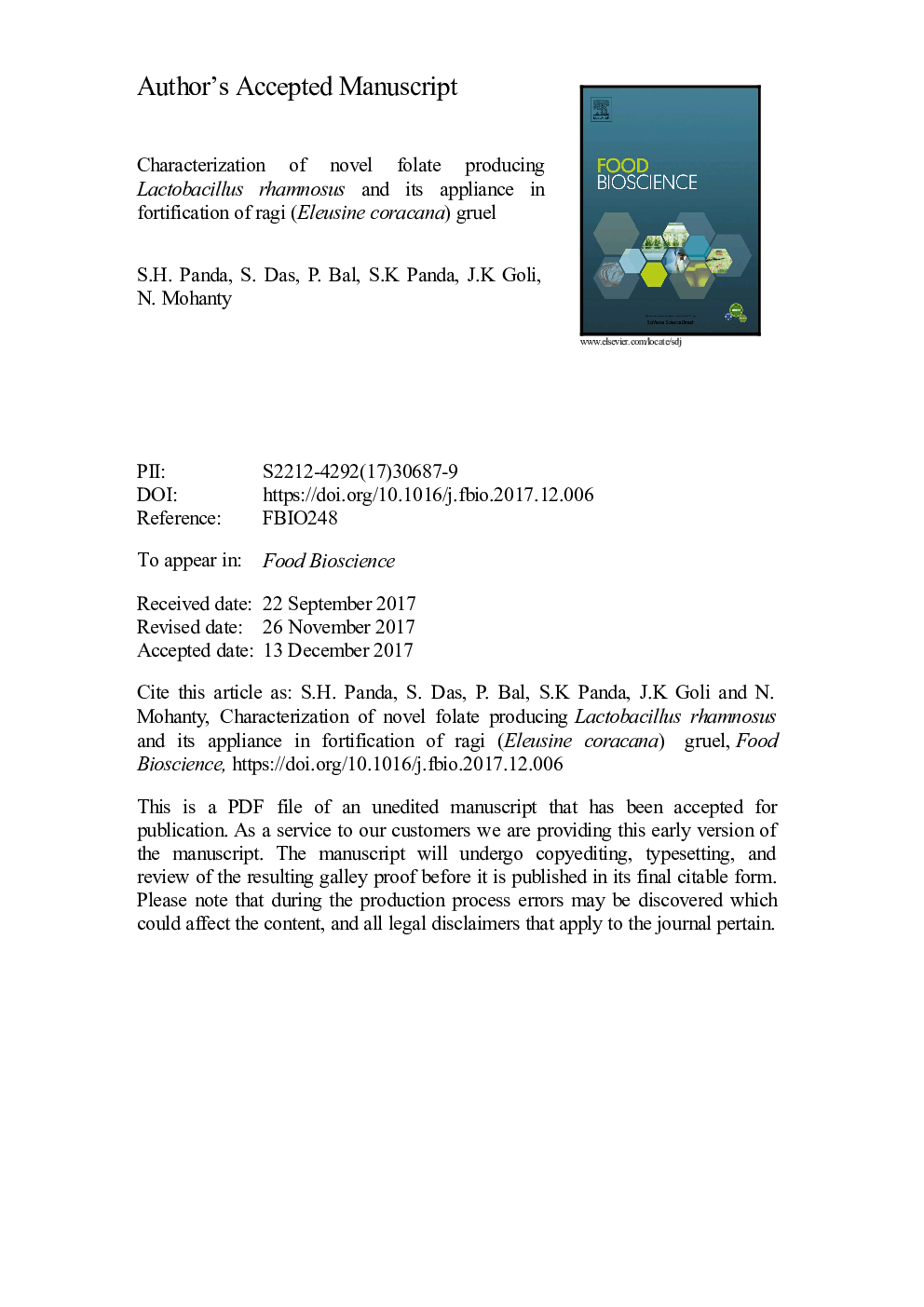| Article ID | Journal | Published Year | Pages | File Type |
|---|---|---|---|---|
| 6488969 | Food Bioscience | 2018 | 31 Pages |
Abstract
Lactic acid bacteria capable of producing folate were isolated and screened from preterm babies. Among all isolates, the highest folate producing isolate was IFM4 (35 ng/ml). HPLC chromatogram suggested that the isolate synthesized 5-methyl tetrahydrofolate (one form of folate). Based upon 16S rRNA gene sequencing, the isolate showed 98% similarity with Lactobacillus rhamnosus. The isolate showed 50% survivability at highly acidic condition (pH 2.0), 95% survivability at 0.5% (w/v) bile salt concentration, antimicrobial activity against food-borne pathogens, exhibited nonhemolytic activity on 5% sheep blood agar and susceptible to several popular antibiotics. Keeping in view the demand of functional and easily digestible food products, a fermented ragi (Eleusine coracana) gruel was prepared by using the folate producing isolate, IFM4. During ragi fermentation, different biochemical parameters i.e. pH, titratable acidity, lactic acid, folate, phenol and antioxidant activities like DPPH, DMPD, FRAP were studied. The fermented ragi gruel showed improved free radical scavenging activity against DPPH (80% in 4th day), DMPD (30.66% for 50 µl in 4th day) radicals and FRAP (0.453 for 100 µl in 4th day) as compared to the control. The above profiling revealed that fermented ragi gruel could improve the functional and health beneficial characteristics of the food. The folate fortified ragi gruel with improved shelf-life period can be recommended as a special food for pregnant and breast feeding women.
Related Topics
Physical Sciences and Engineering
Chemical Engineering
Bioengineering
Authors
S.H. Panda, S. Das, P. Bal, S.K. Panda, J.K. Goli, N. Mohanty,
